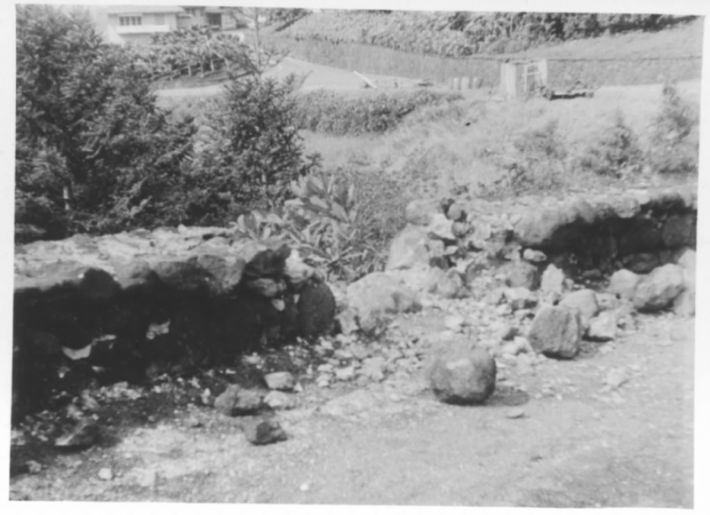Kamehameha Schools offers innovative classes and opportunities to students that contribute to a world class school system. These opportunities are intended to foster our learners’ success and prepare them for college completion, career fulfillment, and to be leaders and contributors in their local and global communities.
One such opportunity afforded KS history classes to participate in Living History Day at the Pacific Aviation Museum in remembrance of Pearl Harbor as well as in-depth research in KS’ archives. This experience led to the uncovering of an amazing sequence of events that took place at KS Kapālama that began on December 7, 1941.
Just before 8 a.m., Japanese planes attacked the United States Naval Base at Pearl Harbor.
During student research, oral histories and correspondence outlined the belief that it was nothing more than a realistic, yet staged exercise. That was not the case.
One errant shell nosed its way over the boys’ dorms and exploded in the stone railing at the main road bend by the plumeria grove beyond Faculty Road.
On December 8, 1941 school was dismissed. The Army moved in and occupied Hale Ola and ʻIolani Hall (Provisional Hospital No. 1 U.S> Army – primarily for women and children injured or shocked during the raid and later a maternity hospital).
Army officers stationed at Kamehameha School for Boys were told be ‘little soldiers’ as explained by 1946 graduate, Eric Crabbe.
Mr. Crabbe’s elder brother, William Crabbe, as well as Senator Daniel Akaka, are named on a plaque above dorm circle that commemorates the boys of the class of 1942 (seniors at the time of the attack) and their service to the school as they guarded the water supply on campus.
Research also revealed discrepancy in separate accounts of the reaction of the girls during the attack. One account mentioned “they took it very well, their chief concern being for the safety of their families scattered about the Territory.”
In an oral history by the ladies of the class of 1944:
- The girls were screaming and running back up to the dorm. The school put 150 girls together into one dorm. That was a mistake because there was mass hysteria … everybody started to cry.”
- 1942-1943 School Year: School resumed on January 12, 1942 with a few less boys, many of whom were able to secure work because the need for skilled and semi-skilled labor was so great.
- Colonel King, the Army Department Surgeon told Dr. Homer Barnes they would need space for 600 patient beds, 100-200 enlisted men and the necessary doctors and nurses to care for around 600 patients.
- Colonel King decided that the Girl’s school would move down to the Boy’s school. Girls would share facilities with the boys until 1946.
Archivists Stacy Naipo and Candace Lee offer a new basic archival research class to high school students at KS Kapālama.
The idea grew from the project-based collaborations with other KS kumu in various disciplines leading to a class that is now a semester-long course held in the schools’ Museum Archive office.

An errant shell exploded in the stone railing at the main road bend by the plumeria grove beyond Faculty Road.

On December 8, the Army occupied Hale Ola and ʻIolani Hall as a provisional hospital – primarily for women and children injured or shocked during the raid and later a maternity hospital.

Bill Puniwai, left and Curtis Kamai were among those like William Crabbe, who guarded Kamehameha’s water reservoir.

The front cover of Ka Moʻī from January 23, 1942, 11 days after school was reopened.

The high school had a rigorous Army ROTC program that provided military training to the male students.

Senior Laakea Bertulfo and Yasuke Ozawa from Japan’s Shimada High School toured the exhibit on December 6. More than 180 Japanese students accompanied KS students to their classes to experience a day in the life of Kamehameha Schools.

Old photographs and historic items from the school archives collection are on display.

KS students were recognized for helping to raise funds for the US war effort by buying war stamps or bonds.

Students in the Archives class designed, created art elements and installed the exhibit.
Related stories
Related photo galleries
TAGS
kapalama,
special event,
pearl harbor,
archives,
history,
world war ii,
16-17action1,
org news
CATEGORIES
Kaipuolono Article, Newsroom, Campus Programs, Kapalama
Print with photos
Print text only










